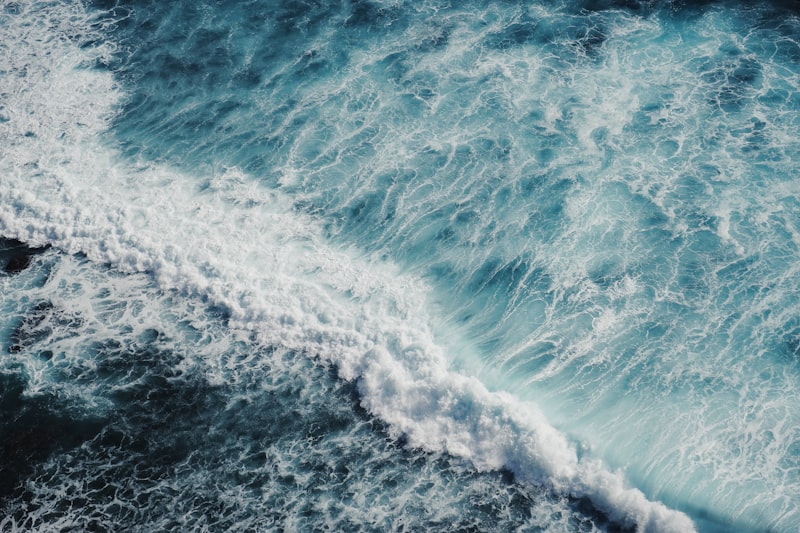Ever wondered about the strange inhabitants of the deep blue sea? The ocean is home to a myriad of creatures that are as bizarre as they are fascinating. From the depths where sunlight struggles to reach, these marine marvels have adapted in ways that challenge our imagination.
One of the most peculiar creatures is the Anglerfish, known for its bioluminescent lure dangling from its head. This lure attracts unsuspecting prey right into its gaping jaws, making it a master of camouflage and ambush.
Moving to the ocean floor, we encounter the Dumbo Octopus, named after its ear-like fins that resemble those of Disney’s famous elephant. This deep-sea dweller gracefully maneuvers with its fins, propelling itself through the darkness in search of small crustaceans.
Venturing into tropical waters, the Mantis Shrimp stands out not only for its striking colors but also for its incredible punch. Its claw accelerates faster than a bullet, delivering a blow that can break aquarium glass and stun its prey with astonishing force.
In contrast, the Leafy Sea Dragon drifts gently through seaweed beds off the coast of Australia, resembling a piece of floating seaweed. Its leaf-like appendages provide perfect camouflage against predators, blending seamlessly with its environment.
Lastly, the Blobfish, often misunderstood due to its appearance, lives in the deep waters off the coasts of Australia and New Zealand. Its gelatinous body allows it to survive in the high-pressure environment of the ocean depths, where it appears less blob-like in its natural habitat.
These oceanic oddities remind us of the incredible diversity and adaptability of life beneath the waves. Each creature, with its unique features and survival strategies, adds to the wonder and mystery of the underwater world.
Deep Sea Delights: Unveiling the Most Bizarre Ocean Creatures

Imagine encountering the Vampire Squid, a creature that resembles something out of a Halloween tale rather than a marine animal. With its deep red hue and cloak-like webbing between its arms, this cephalopod drifts through the dark waters, using bioluminescent organs to startle predators and prey alike. It’s a marvel of adaptation, perfectly suited to the depths where little to no light penetrates.
Then there’s the Barreleye Fish, also known as the Spookfish, which boasts a transparent head. This remarkable adaptation allows it to look upward through its skull, giving it a unique advantage in spotting silhouettes of potential prey or predators against the faint glow from above. It’s a reminder of how evolution can produce solutions to challenges that seem impossible at first glance.
The Dumbo Octopus, named after Disney’s famous elephant for its ear-like fins, gracefully glides through the water column. Unlike its larger cousins, this octopus has evolved a delicate existence, drifting with the currents and feeding on small crustaceans and other marine organisms. Its charm lies not only in its appearance but also in its ability to thrive in one of the Earth’s most extreme environments.
Moving deeper into the abyssal plains, we encounter the Goblin Shark, often referred to as a living fossil due to its primitive features. With a long, flattened snout and jaws that extend unnervingly when hunting, this shark is a testament to the ancient lineage that persists in the darkest corners of the ocean.
From the Abyss: Meet the Top 10 Strangest Ocean Species
Diving into the depths of our oceans unveils a world of wonders, where bizarre creatures lurk in the dark waters. These creatures, shaped by millions of years of evolution in extreme conditions, showcase nature’s creativity at its finest. Let’s embark on a journey to discover the top 10 strangest ocean species that inhabit the abyssal realms.
-
The Vampire Squid: Don’t be misled by its name – the vampire squid isn’t a bloodsucker but an ancient marvel. With its cloak-like webbing between its arms and bioluminescent organs, it navigates the depths with eerie grace.
-
Barreleye Fish: Imagine a fish with a transparent head revealing its barrel-shaped eyes. This deep-sea dweller uses its unique eyes to spot prey in the darkness above.
-
Goblin Shark: Known as a “living fossil,” the goblin shark sports a protrusible jaw that snaps out to catch prey. Its pinkish hue and elongated snout add to its alien appearance.
-
Blobfish: Often crowned as the world’s ugliest fish, the blobfish’s gelatinous body makes it appear melted. It survives in the deep by floating just above the seabed, where pressure is high.
-
Dumbo Octopus: Resembling the famed Disney character with its ear-like fins, the dumbo octopus gracefully glides through the deep waters. It’s a master of disguise and ambush hunting.
-
Fangtooth Fish: Despite its menacing teeth, the fangtooth fish is only a few inches long. It lurks in the darkness, where its sharp teeth help it catch prey that ventures too close.

Anglerfish: Famously known for its bioluminescent lure dangling from its forehead, the anglerfish attracts unsuspecting prey into its toothy jaws. Males are much smaller and latch onto females, becoming essentially parasitic.
-
Frilled Shark: With a snake-like appearance and rows of needle-like teeth, the frilled shark is a living fossil that hunts squid and fish in the deep waters using its elongated jaws.
-
Viperfish: Sporting a long, needle-like fang, the viperfish is a fearsome predator in the abyss. It uses bioluminescent organs along its belly to attract prey in the darkness.
-
Yeti Crab: Named after the mythical abominable snowman, the yeti crab sports hairy claws that host bacteria, providing it with a unique food source. It’s found near hydrothermal vents, where it thrives in extreme conditions.
These creatures, adapted to survive in the harsh, dark, and cold depths of the ocean, remind us of the vast diversity and mysteries that lie beneath the waves. Each one is a testament to nature’s boundless imagination and the incredible adaptations that enable life to flourish in even the most inhospitable environments.
Aliens of the Deep: Discover the Weirdest Creatures in Our Oceans
Take, for instance, the Anglerfish. Found in the dark abyssal depths, this fish lures prey with a bioluminescent lure dangling from its head, akin to a fishing rod dangling with bait in the dark. Its grotesque appearance, marked by a large mouth full of sharp teeth, adds to its eerie charm.
Moving deeper, the Goblin Shark emerges as a true relic of the past. Known as a “living fossil,” its elongated snout and protrusible jaws make it a formidable predator in the deep sea. With a pinkish hue and a ghostly presence, it navigates the lightless depths with its keen sense of electroreception.
Not all deep-sea creatures are large; some, like the Barreleye Fish, are small but no less strange. Its transparent head, filled with fluid, houses its upward-facing eyes that allow it to spot prey silhouetted against the faint glow of bioluminescent organisms above.
Venture into the abyssal plains, and you might encounter the Dumbo Octopus. Named after Disney’s beloved elephant, this octopus gracefully flaps ear-like fins to glide through the water. With a gelatinous body and large, soulful eyes, it embodies both grace and mystery in the ocean’s depths.
Even the landscapes of the deep sea harbor alien-like features. Hydrothermal vents, spewing forth superheated water laden with minerals, host communities of extremophiles. These microorganisms thrive in temperatures and pressures that would be lethal to most life forms, challenging our understanding of where life can exist.
The oceans remain Earth’s final frontier, harboring creatures that continually astonish and challenge our understanding of life. These “Aliens of the Deep” remind us of the boundless diversity and adaptability of life forms on our planet, underscoring the importance of exploring and preserving these enigmatic ecosystems.
Underwater Oddities: The Fascinating World of Ocean Oddballs
Imagine encountering the blobfish, often dubbed the world’s ugliest fish due to its gelatinous appearance. Found in the deep waters off Australia and Tasmania, this fish has adapted to its environment with a body density slightly less than water, allowing it to float effortlessly.
Another intriguing oddball is the vampire squid, a creature that resides in the dark depths of the ocean. Despite its ominous name, it’s not a threat to humans. Instead, it uses bioluminescent displays to deter predators and navigate the depths with ease.
Moving on to the mantis shrimp, which possesses incredible strength in its punch that can rival the speed of a bullet. Its eyesight is equally impressive, able to detect polarized light and perceive colors beyond human comprehension.
The ocean sunfish, or mola mola, stands out for its sheer size and peculiar shape, resembling a massive floating disc. Despite its appearance, it gracefully glides through the water, feeding on jellyfish and other small marine organisms.
Lastly, the axolotl, known as the Mexican walking fish, challenges typical amphibian behavior by retaining its juvenile features into adulthood and regenerating lost limbs effortlessly.
Frequently Asked Questions
How do unique adaptations help ocean animals survive?
Discover how unique adaptations enable ocean animals to thrive in their environments. This FAQ explores the specialized features and behaviors that allow these creatures to find food, avoid predators, and navigate diverse ocean habitats effectively.
What are the strangest creatures found in oceanic trenches?
Discover the most peculiar marine life inhabiting oceanic trenches. From the elusive anglerfish to the ethereal dumbo octopus, these creatures exhibit extraordinary adaptations to survive in extreme depths.
What are some examples of bizarre deep-sea creatures?
Explore unique examples of deep-sea creatures, such as the vampire squid with its dark red skin and bioluminescent abilities, the gulper eel known for its enormous jaws and expandable stomach, and the anglerfish with its glowing lure. Discover more fascinating species that thrive in the depths of the ocean.
How do bioluminescent organisms light up the deep sea?
Learn how bioluminescent organisms generate light in the deep sea through a chemical reaction involving luciferin and oxygen, emitting light without heat, which aids in camouflage, communication, and attracting prey.
What are some extraordinary facts about marine life in the ocean depths?
Discover fascinating facts about marine life in the ocean depths, including bioluminescent creatures that emit light, mysterious deep-sea ecosystems reliant on chemosynthesis, and species adapted to extreme pressure and darkness.


